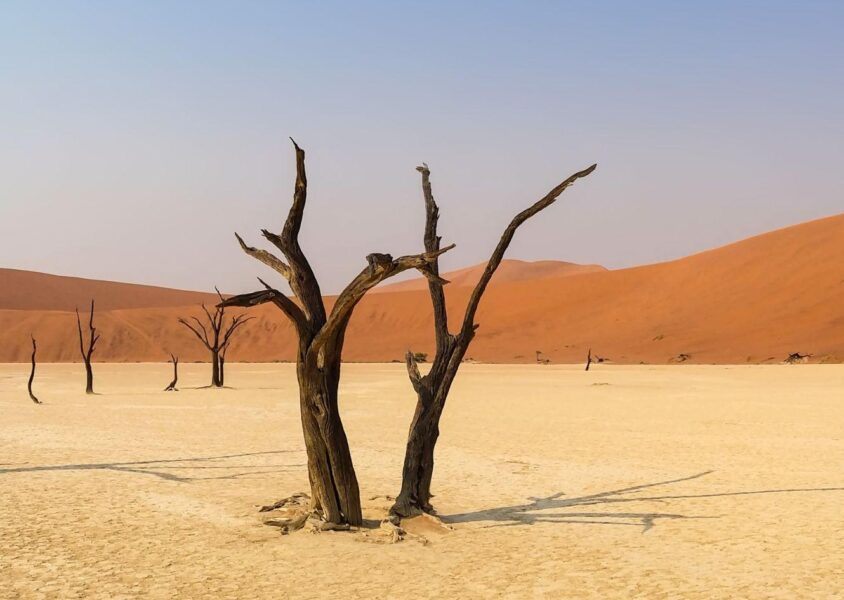Desertification Is Becoming Alarming

Desertification and climate change are closely linked, with desertification often being driven or exacerbated by climate change. Desertification is the process by which land becomes increasingly dry and barren, often due to a combination of human activities and environmental factors. Climate change, on the other hand, is the long-term warming of the Earth’s surface and atmosphere due to increasing levels of greenhouse gases in the atmosphere, which trap heat and cause the planet to warm.
One of the main ways that climate change contributes to desertification is through changes in rainfall patterns. As the Earth warms, some areas may experience more extreme weather events, such as prolonged droughts or heavy rainfall, which can lead to soil erosion and degradation. In addition, rising temperatures can cause water to evaporate more quickly, which can lead to a reduction in soil moisture and an increase in desertification.
Another way that climate change contributes to desertification is through the loss of vegetation. As temperatures rise, certain plants and animals may be unable to adapt and may die off, leading to the loss of vegetation in affected areas. This, in turn, can lead to soil erosion and further degradation of the land.
It is important to address both desertification and climate change in order to protect the health and productivity of the planet’s land and to support the well-being of human communities. This will require a combination of strategies, such as sustainable land management practices, afforestation and reforestation, and reducing greenhouse gas emissions.
Stopping desertification and reversing the damage that has already been done can be a complex and challenging task, but it is important for preserving biodiversity, supporting human communities, and combating climate change. Some strategies that can be effective in addressing desertification include:
Sustainable land management practices: These practices include reducing soil erosion, conserving water, and using drought-resistant crops.
Afforestation and reforestation: Planting trees and other vegetation can help to stabilize soil, reduce erosion, and increase the availability of water.
Water conservation and management: Techniques like drip irrigation and rainwater harvesting can help to reduce water usage and increase the efficiency of irrigation.
Sustainable livestock management: Overgrazing by livestock is a major contributor to desertification, so it is important to adopt sustainable livestock management practices that minimize the impact on the land.
Supporting small-scale farmers: Small-scale farmers are often disproportionately affected by desertification, so it is important to provide them with the resources and support they need to adopt sustainable land management practices.
Reducing greenhouse gas emissions: Climate change is a major driver of desertification, so it is important to take steps to reduce greenhouse gas emissions in order to mitigate the impacts of global warming.
Promoting research and education: Increasing our understanding of desertification and the factors that contribute to it can help inform more effective strategies for addressing the problem.
The Save Soil movement advocates for the adoption of sustainable land management practices that can help to preserve soil health and prevent land from becoming degraded. These practices include reducing soil erosion, conserving water, and using drought-resistant crops. The movement also promotes afforestation and reforestation as a way to stabilize soil, reduce erosion, and increase the availability of water.
In addition to these efforts, the Save Soil movement aims to educate people about the importance of soil and the role it plays in supporting human communities and ecosystems. The movement also works to advocate for policy changes and other initiatives that can help to address soil degradation and desertification.
The Save Soil movement is focused on raising awareness and taking action to address the issues of soil degradation and desertification, which are important for preserving biodiversity, supporting human communities, and combating climate change.